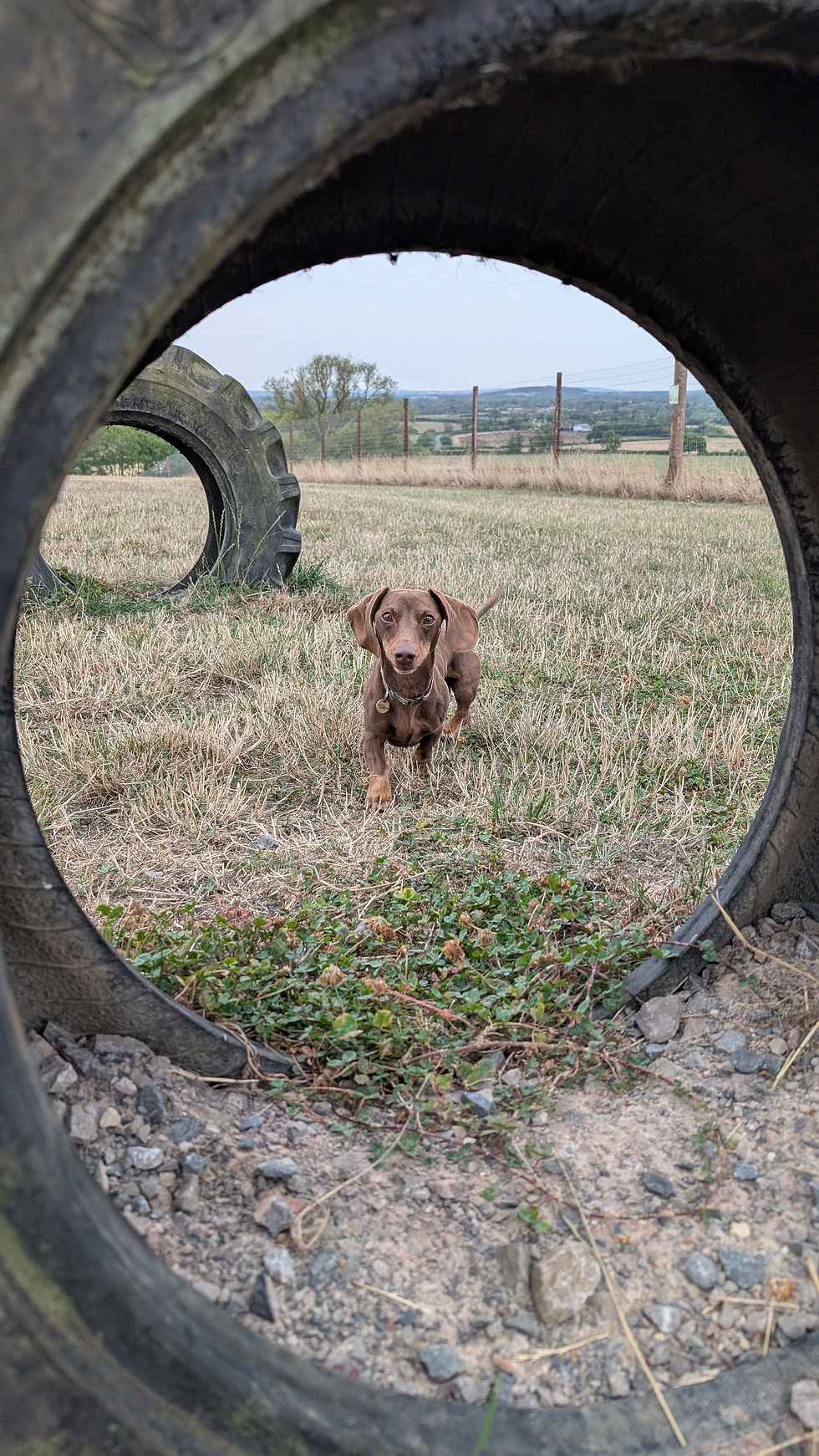From Command to Connection: How Dog Training Has Evolved and Why Secure Fields Matter
- Catherine

- Jun 30
- 3 min read
Updated: Aug 4
Dog training has undergone a remarkable transformation over the past century. Once centred on dominance and correction, it has shifted towards collaboration, emotional awareness, and humane science-based techniques. Understanding this evolution is key not only for improving outcomes in dog behaviour but also for nurturing healthier relationships between dogs and their humans.
Secure dog parks like Poundon Pastures are designed with these modern principles in mind. By offering a controlled, low-stress environment, they provide the perfect setting for training approaches that prioritise trust, communication, and welfare.

1. 📜 The Old Paradigm: Dominance and Correction
In the mid-20th century, dog training was heavily influenced by military and working-dog models, particularly those used during wartime. Trainers often relied on punishment, physical corrections, and aversive tools such as choke chains to enforce obedience. This approach was grounded in the belief that dogs sought to dominate humans unless they were “put in their place.”
The theory of dominance has since been widely discredited in the scientific community. Studies such as Bradshaw et al. (2009) demonstrated that dogs do not form hierarchical packs in the way previously believed. Punishment-based training methods have been shown to increase fear, anxiety, and aggression in dogs (Herron, Shofer & Reisner, 2009).
2. 🧠 The Shift to Positive Reinforcement
The late 20th century saw a growing movement toward positive reinforcement, influenced by behavioural science and the work of psychologists such as B.F. Skinner. Rather than punishing undesirable behaviour, this method focuses on rewarding behaviours we want to see more of, offering food, praise, toys, or play.
This approach not only improves learning outcomes but also enhances the dog–owner relationship. Hiby et al. (2004) found that owners using reward-based training reported fewer problem behaviours and greater satisfaction with their dogs.
Modern training is no longer about control but about cooperation. Dogs are treated as sentient learners capable of offering choices and communicating preferences.
3. 🐾 The Role of the Environment in Modern Training
As training methods have progressed, so too has our understanding of the training environment. Dogs, like humans, learn better in spaces where they feel safe and supported. Public parks or streets can be overstimulating and unpredictable, especially for nervous, reactive, or young dogs.
Secure dog parks provide:
A distraction-controlled setting
A safe space to practise off-lead recall
A stress-free environment for reactive dogs
Support for building confidence without external pressures
Training for just 1 hour in a quiet, enclosed space can be exponentially more productive than longer sessions in busy or unpredictable environments.
4. 🔍 Training as Enrichment, Not Just Obedience
Modern training recognises that cognitive and emotional enrichment are essential to a dog’s wellbeing. Learning isn’t just about compliance; it is a form of mental stimulation that helps reduce frustration, boredom, and behavioural problems.
Using secure fields for enrichment-based training supports dogs in learning new skills such as scent work, agility, or cooperative care. These activities tap into natural instincts and help meet a dog’s needs, which reduces the likelihood of problem behaviours at home.
Training becomes a shared activity, strengthening the human–dog bond in a way that is positive and emotionally healthy.
5. 🏡 Why Secure Fields Support the Future of Dog Training
The rise in demand for secure dog fields reflects a deeper understanding of dog welfare. For owners practising modern techniques, these spaces offer more than safety; they offer freedom. They enable real-world practice of cues such as recall, settling, and impulse control in a supportive and private setting.
At Poundon Pastures, we designed our dog park to align with modern behavioural science. From recall training to behaviour rehabilitation, our field offers a safe environment for applying the very best of today’s methods, all while giving your dog the freedom to move, explore, and learn.
Come and visit us soon to see this for yourself - Book here
References
Bradshaw, J. W. S., Blackwell, E. J., & Casey, R. A. (2009). Dominance in domestic dogs — useful construct or bad habit? Journal of Veterinary Behavior, 4(3), 135–144.
Herron, M. E., Shofer, F. S., & Reisner, I. R. (2009). Survey of the use and outcome of confrontational and non-confrontational training methods in client-owned dogs showing undesired behaviours. Applied Animal Behaviour Science, 117(1-2), 47–54.
Hiby, E. F., Rooney, N. J., & Bradshaw, J. W. S. (2004). Dog training methods: their use, effectiveness and interaction with behaviour and welfare. Animal Welfare, 13(1), 63–69.
Skinner, B. F. (1953). Science and Human Behavior. New York: Macmillan.
.png)


Comments